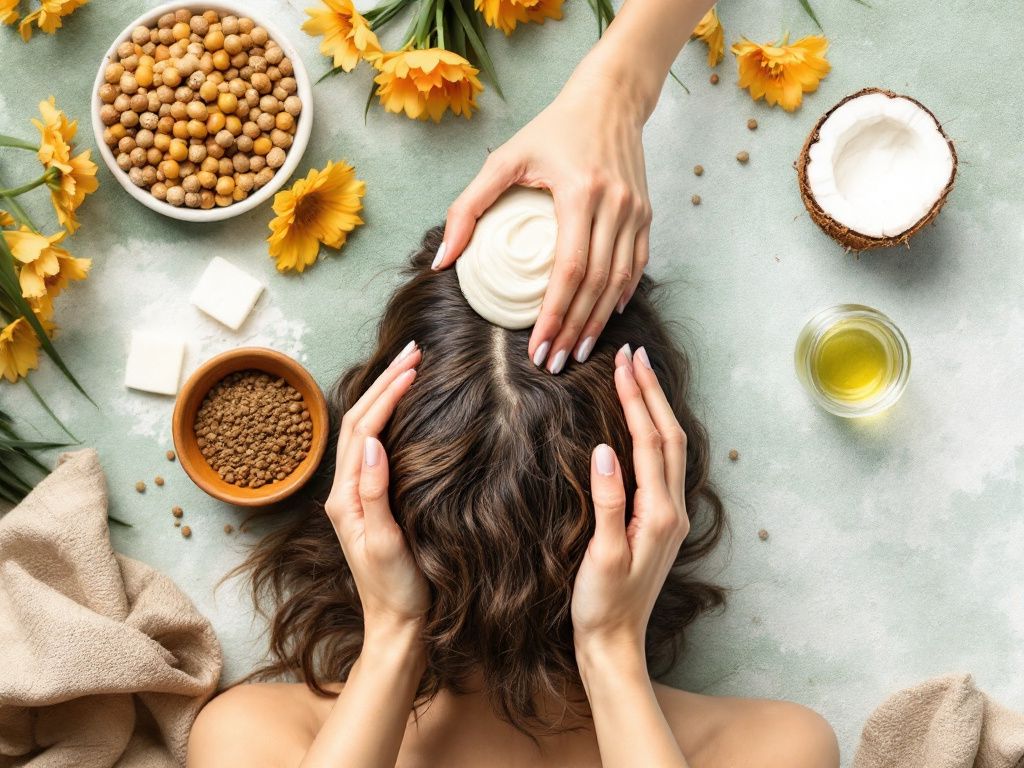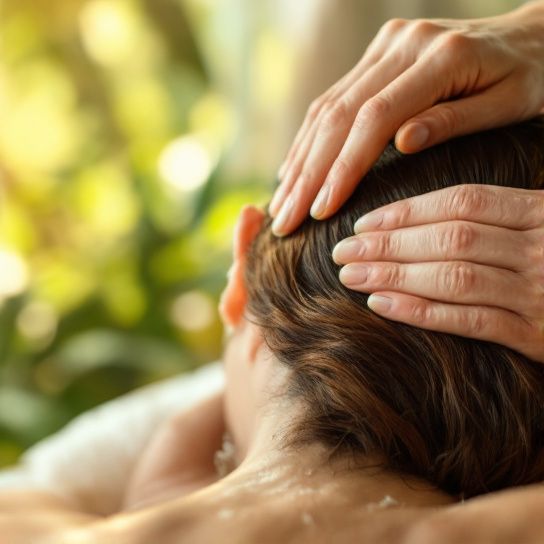
Ever find yourself diving deep into the exciting, albeit daunting, world of hair care and get hit with the question, “Am I really doing this whole hair mask thing right?” Trust me, you’re not alone. With so many options for hair care, it’s easy to feel like you’re drowning in a sea of conditioners, serums, and hair masks, especially when trying to determine the best hair mask use. Whether you’re dealing with pesky dry ends, frizz that just won’t quit, or simply want your hair to shine a little brighter, knowing how to choose and apply a hair mask can have a huge impact. But fear not—we’re here to navigate these waters together, discussing everything from picking the right product to mastering that perfect application technique.
Understanding Hair Masks
What Exactly is a Hair Mask?
Alright, let’s start with what a hair mask actually is. Think of hair masks as face masks—but for your hair. They are deep conditioning treatments jam-packed with nourishing ingredients. Unlike regular conditioners, hair masks go the extra mile by penetrating deeply into your strands, repairing damage, and providing intensive moisture.
Why Use a Hair Mask?
Here’s the deal. Stress, hair styling, color treatments, pollution—it all takes a toll on your locks. Over time, hair loses its natural oils and moisture, leaving it thirsty for nourishment. That’s where hair masks swoop in as your knight in shining armor. They’re designed to target specific hair woes like dryness, damage, or lack of shine. Basically, if your hair feels a bit “meh,” a hair mask can rejuvenate it, acting as a deep conditioning agent to bring back the lustrous life.
Choosing the Right Hair Mask
Know Your Hair Type
First things first—know your hair like the back of your hand. Is it dry, oily, fine, or maybe curly? Each type has its own specific needs. It’s like choosing the right dessert; some days, you crave chocolate, and other days, it’s all about the fruity stuff. Here’s how you can align your hair’s cravings with the right mask:
- Dry Hair: Look for masks with moisturizing ingredients like shea butter or argan oil.
- Oily Hair: Opt for lightweight masks with ingredients that won’t weigh your hair down, like tea tree oil.
- Curly Hair: Seek out formulations with coconut oil or avocado to define curls while offering hydration.
Now, let’s not overcomplicate it, but keep an eye out for these main ingredients that cater specifically to your tresses needs.

Picking the Right Formulation
Shopping for hair masks can sometimes feel like venturing in a candy shop—but unwrapping the goods can leave your hair feeling totally different for a sweet or sour outcome. Cream-based, clay, or gel? Here’s a quick scoop:
- Cream-based Masks: Perfect for dry or damaged hair due to their hydrating and softening properties.
- Clay Masks: Usually a better fit for oily scalp problems since they can absorb excess oil.
- Gel Masks: They tend to work magic for fine hair. Light and bouncy, they don’t weigh down your locks.
Key Ingredients to Look For
For the true hair enthusiasts—or simply the curious—understanding what ingredients make a good hair mask can often be the missing link in your hair care rituals. Give this breakdown a whirl:
- Argan Oil: Renowned for its repairing properties, it nourishes deep down.
- Coconut Oil: A hero ingredient for hydration and shine.
- Keratin: The pivotal component of healthy hair, keratin-based masks can rebuild and strengthen strands.
- Honey: Not just sweet but highly moisturizing and great for maintaining elasticity.
How to Apply Hair Masks Effectively
Pre-Application Prep
Think of this as the mise-en-place before cooking a meal. Set up your space and have your tools at-the-ready. A wide-toothed comb, a towel, your trusty mask, and a mirror. Once you’re geared up and set to go, follow these steps:
- Cleanse First: Ensure your hair is clean. Dirt or product buildup will block absorption. Conditioner, on the other hand, is a no-go this time around—save that for another wash day.
- Slightly Damp Hair: Apply your mask on damp hair. Squeeze out excess water just like you would juice out of a lemon. Too much water can dilute the mask.
Step-by-Step Application

Here’s where the hands get a bit dirty (in the best possible way):
- Section it Out: Work in sections so no strand gets left behind. Divide your hair into four quadrants using the wide-toothed comb.
- Apply and Massage: Work the mask from root to tip, massaging gently into the scalp and ensuring each section is fully coated. Revel in the sensory experience; it’s therapeutic!
- Lock in the Goodness: Cover your hair with a shower cap or a warm towel. The idea is to cocoon the mask with enough warmth so it sinks in. You could hash this out while catching up on your latest TV binge.
- Timing’s Everything: Follow the instructed time on your chosen product. Short on time? At minimum, aim for a solid 10 minutes, but if you can, let the mask work its magic for up to an hour.
Rinsing Off
Rinsing can sometimes be the unsung hero in this bustling hair ritual. Use lukewarm water—I repeat, not hot—to wash out the mask. Gradually decreasing the temperature as you rinse helps seal the hair’s cuticle, locking in those nutrients.
Post-Mask Aftercare
Drying It Right
So you’ve rinsed your hair—great! Now, the drying technique makes its cameo:
- Pat, Don’t Rub: Be gentle and pat your hair with a towel without vigorous rubbing to avoid breakage.
- Air Dry Option: Let your hair air dry when possible. Blow-drying can wait today; give your locks a break.
Styling Tips
Your hair probably looks and feels different by this point. So take it easy on the heat and styling products. A few drops of light hair serum or oil give a good shine boost without needing to whip out the styling tools.
Common Mistakes to Avoid

Even with the best intentions in mind, here’s a rundown of what not to stumble into:
- Overuse: Less can often be more. Using a hair mask too frequently can lead to product buildup or weighed-down hair. Once a week is usually sufficient.
- Using the Wrong Mask: Mismatched ingredients won’t have the desired impact and could cause extra troubles.
- Ignoring Scalp Needs: Ah, the unsung hero—the scalp! Don’t skip applying masks close to the scalp if the mask addresses scalp nourishment. Often, the health of your hair stems from there.
FAQs About Hair Mask Use
**How often should I use a hair mask?**
- Generally, once a week for healthy upkeep or twice if you’re battling acute dryness or damage.
**Can I leave the mask on overnight?**
- Some masks are designed for deeper overnight treatments. Check instructions first; certain ingredients could become drying if left on too long.
**Are homemade masks as effective?**
- They’ve got their merits—when crafted right. Ingredients like avocados, honey, and yogurt are notably beneficial, but match the recipe to your hair needs.
A Wrapping Up Chat
Stepping back, it’s incredible to see how hair masks have evolved from luxury items to everyday essentials. No longer lost in the jungle of products, you hold the roadmap to masterful hair mask use. Relish in your now-nurturing hair care routines, savor the silkiness, and boast the newfound glow. Cheers to vibrant, healthier hair, one mask at a time!
Remember: The journey to luscious locks is a marathon—not a sprint, so patience is key. Whenever you try a new mask, monitor how your hair responds and fine-tune your routine accordingly. Maybe even convince a friend to join you; celebrate together with delightful hair days ahead!
Frequently Asked Questions
What is a hair mask and how does it differ from regular conditioner?
A hair mask is an intense conditioning treatment formulated with nourishing ingredients that hydrate, repair, and strengthen hair. Unlike regular conditioners, hair masks are more concentrated and designed to be left on the hair for a longer period, typically between 10 minutes to several hours, to provide deep hydration and repair[3][4][5).
How do I use a hair mask effectively?
To use a hair mask effectively, apply it to damp, towel-dried hair after shampooing. Focus on areas that need extra care, such as the ends or roots. Leave the mask on for at least 20 to 30 minutes, or even overnight for more intense treatment. Then, rinse thoroughly with lukewarm or cool water to seal the hair cuticle and retain moisture[4][5][2).
What are the benefits of using a hair mask?
Using a hair mask provides several benefits, including deep hydration, repair and strengthening of damaged hair, reduction of frizz, enhancement of shine, and promotion of a healthier scalp. It also helps in preventing hair breakage and split ends, and can protect hair from environmental and styling damage[1][3][5).
How often should I use a hair mask?
The frequency of using a hair mask depends on your hair type and needs. For dry, damaged, or frizzy hair, using a hair mask once a week is recommended. For oilier hair, it may be better to use a hair mask every couple of weeks. Adjust the frequency based on how your hair responds to the treatment[2][4][5).
References


Leave a Reply